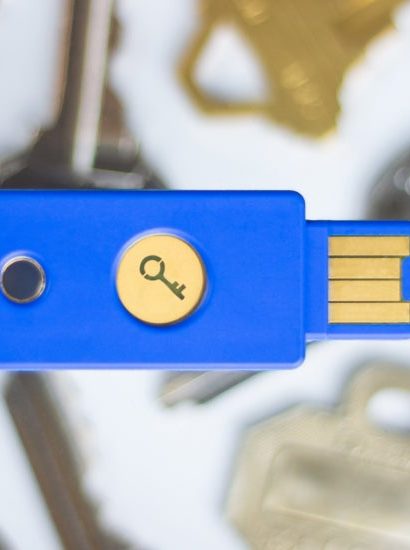The world has entered an era where wires, plugs, and physical connections are gradually fading away. From smartphones and smart homes to self-driving cars and remote surgeries, wireless technology is weaving the invisible web of global connectivity. This phenomenon, often described as “wireless wizardry,” represents the remarkable innovation that allows information, power, and data to move freely through the air.
This article explores the evolution, current advancements, and the promising future of wireless technology — the magical force making our world faster, smarter, and more interconnected than ever before.
The Rise of the Wireless Revolution
The concept of wireless communication dates back to the late 19th century, when inventors like Guglielmo Marconi pioneered radio transmission. What began as simple radio signals has evolved into an intricate network connecting billions of devices worldwide.
Today, nearly everything we use — phones, laptops, wearables, home systems, and even vehicles — communicates without cables. Wireless technology is no longer a luxury; it has become an essential part of modern infrastructure.
This revolution has redefined communication, enabling faster data exchange and real-time collaboration that transcends physical boundaries.
How Wireless Technology Works
At its core, wireless communication transmits data through electromagnetic waves instead of wires. These waves travel across specific frequency bands, carrying information that can be decoded by compatible devices.
Technologies such as Wi-Fi, Bluetooth, infrared, cellular networks, and satellite communication all rely on this principle.
For instance, Wi-Fi connects devices through radio waves over short distances, while cellular networks use towers to link mobile devices to global communication grids. The constant improvement of these technologies has led to faster speeds, lower latency, and broader coverage.
The Magic of Wi-Fi and Beyond
Wi-Fi has become the heartbeat of modern life. From homes to offices, airports to cafés, wireless internet allows people to access information and entertainment from virtually anywhere.
Recent advancements, such as Wi-Fi 6 and Wi-Fi 7, promise faster connections, greater efficiency, and enhanced security. These upgrades are crucial as the number of connected devices skyrockets through the Internet of Things (IoT).
Wi-Fi is no longer limited to laptops and smartphones. It powers smart refrigerators, thermostats, doorbells, and even entire city infrastructures, forming the backbone of connected living.
5G: The Game Changer of Connectivity
The introduction of 5G technology marks one of the biggest leaps in wireless history. Compared to 4G, 5G offers speeds up to 100 times faster, drastically reduced latency, and the capacity to connect millions of devices simultaneously.
This new network standard opens the door for innovations like autonomous vehicles, remote-controlled robots, and advanced telemedicine. Imagine surgeons performing operations from thousands of miles away or factories running entirely on synchronized smart machines — 5G makes such scenarios a reality.
In essence, 5G is not just about speed; it is the foundation for the next generation of intelligent, wireless ecosystems.
Wireless Power Transfer: Charging Without Cables
One of the most fascinating developments in wireless wizardry is wireless power transfer. This technology allows devices to charge without physical cords or plugs.
Wireless chargers use electromagnetic fields to transmit power from a charging pad to a device. Over time, researchers have expanded this capability to include long-distance power transmission.
Imagine walking into a room where your phone, laptop, and earbuds automatically charge as you use them — no cords, no hassle. Companies are already developing such solutions using magnetic resonance and radio frequency power delivery.
This breakthrough could transform industries, from electric vehicles to consumer electronics, making energy truly mobile.
The Internet of Things: A Web of Connectivity
The Internet of Things (IoT) is the backbone of wireless wizardry. It refers to the network of interconnected devices that communicate and share data in real time. From smart homes to industrial sensors, IoT relies entirely on wireless communication.
Every device, from a smartwatch tracking heart rate to a smart irrigation system monitoring soil moisture, contributes to a vast digital ecosystem. This seamless connectivity enables efficiency, automation, and innovation across industries.
However, with millions of devices transmitting data simultaneously, maintaining speed, reliability, and security becomes increasingly complex — a challenge that wireless innovation continues to address.
Artificial Intelligence and Smart Networks
Artificial Intelligence (AI) is playing a pivotal role in optimizing wireless systems. Smart algorithms can manage network traffic, predict congestion, and adapt bandwidth dynamically.
AI-driven networks can prioritize critical data — such as emergency signals — over less urgent communications. This ensures stability and reliability even during peak usage.
Additionally, AI enhances cybersecurity by detecting unusual patterns and blocking threats in real time. The fusion of AI and wireless communication is leading to self-learning networks capable of managing themselves with minimal human intervention.
Wireless Technology in Everyday Life
The impact of wireless wizardry extends far beyond convenience — it is reshaping how humans interact with technology.
- In healthcare, doctors use wearable sensors to monitor patients remotely, sending real-time data to hospitals.
- In transportation, vehicles communicate with each other and with infrastructure, reducing accidents and improving traffic flow.
- In education, students access online resources and virtual classrooms from anywhere.
- In entertainment, streaming platforms deliver high-definition content instantly across wireless networks.
These examples illustrate how wireless technology has become an integral part of daily life, empowering people with mobility, flexibility, and freedom.
The Challenges of a Wireless World
Despite its advantages, wireless technology also faces significant challenges.
Security risks are among the biggest concerns. As data moves through the air, it becomes vulnerable to interception and hacking. Protecting sensitive information requires robust encryption, authentication, and monitoring systems.
Bandwidth limitations are another issue. With billions of connected devices, network congestion can slow communication. Developing new frequency spectrums and efficient data management techniques is essential.
Finally, energy consumption and electronic waste from wireless infrastructure present environmental challenges. Sustainable practices and energy-efficient designs will be critical as connectivity expands globally.
The Future of Wireless Wizardry
The future of wireless technology promises even more astonishing possibilities.
Researchers are experimenting with 6G networks, expected to deliver unimaginable speeds and integrate artificial intelligence directly into network architecture. 6G could support holographic communication, smart cities powered by autonomous systems, and global internet access in remote regions.
Another exciting frontier is quantum communication, which uses the principles of quantum physics to create ultra-secure data transmission. This could redefine digital security in the coming decades.
From wireless charging highways for electric cars to brain-computer interfaces that connect humans directly to machines, the future of wireless wizardry will blur the boundaries between science fiction and reality.
Conclusion
Wireless wizardry has transformed the way humanity connects, communicates, and creates. From the first radio signals to the dawn of 5G and beyond, wireless technology continues to push the boundaries of what is possible.
It has untethered us from physical limitations, turning our world into a seamless web of communication and innovation. As new generations of technology emerge, the dream of complete connectivity — where data, power, and ideas move effortlessly — is becoming reality.
Yet with great power comes great responsibility. The future of wireless wizardry must balance innovation with ethics, privacy, and sustainability. The magic of wireless technology lies not just in its speed or convenience, but in its ability to connect humanity in meaningful, intelligent, and responsible ways.
FAQs
1. What does “wireless wizardry” mean?
Wireless wizardry refers to the incredible innovations that allow communication, power, and data transfer without physical cables. It encompasses technologies such as Wi-Fi, Bluetooth, 5G, and wireless charging that make modern connectivity possible.
2. How will 5G change wireless communication?
5G brings ultra-fast speeds, low latency, and the capacity to connect millions of devices at once. It will enable technologies like autonomous vehicles, smart cities, and advanced healthcare applications, making connectivity nearly instantaneous.
3. What are the risks of wireless technology?
The main risks include cybersecurity threats, data breaches, and potential health and environmental concerns. Strong encryption, ethical design, and sustainable infrastructure are necessary to mitigate these risks.
4. What is the difference between Wi-Fi and 5G?
Wi-Fi is primarily used for local area connections, such as homes and offices, using routers. 5G, on the other hand, is a cellular technology designed for wide-area communication, offering higher speeds and greater mobility.
5. What does the future hold for wireless technology?
The future includes advancements like 6G networks, wireless power grids, and quantum communication. These innovations will make connectivity faster, smarter, and more secure while integrating seamlessly into every aspect of daily life.
Also read: Mia Francis Leak Controversy: What It Teaches Us About Digital Privacy and Online Ethics









